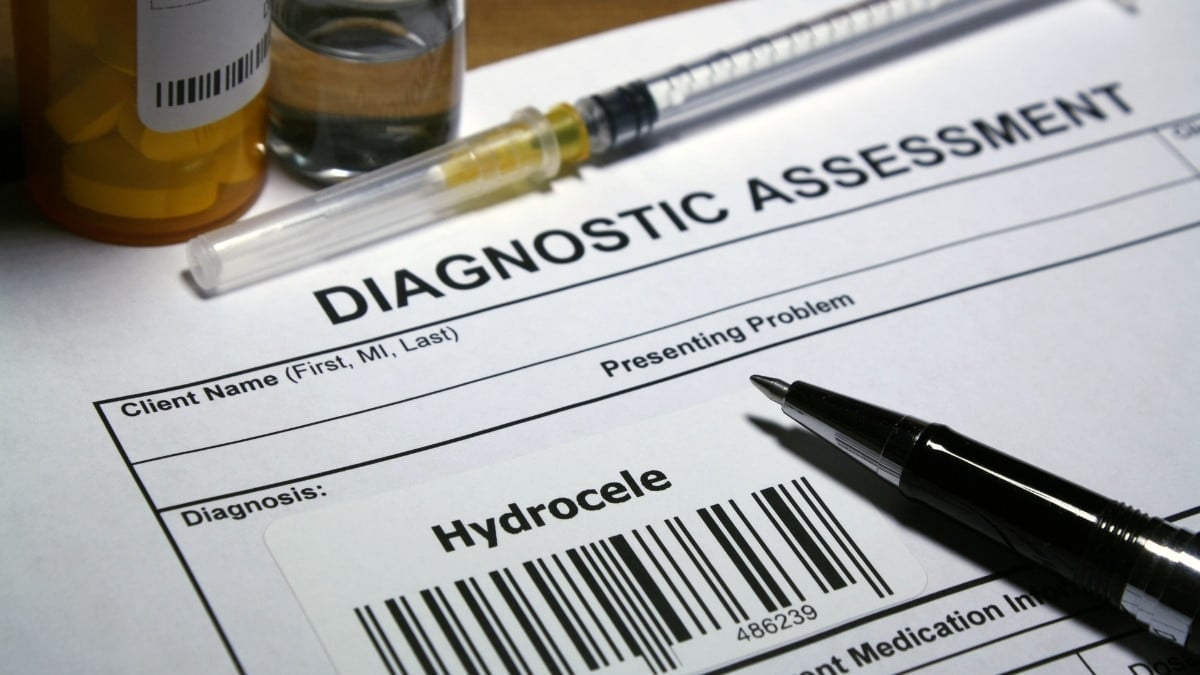Hydrocele is a condition in men when the scrotum gets swelled because fluid gets collected in the thin sheath surrounding the testicles. Hydrocele is mostly common in newborn babies that sometimes disappear with time, but in some cases, the fluid continuously gets collected increasing the size of the testicles.
How Common Is Hydrocele?
Hydrocele is the most common benign swelling of the scrotum that often occurs in newborn babies. Almost 10% of newborn infants have a hydrocele that gets treated with the passing time.
However, 1% of adult men suffer from hydrocele, this can be because of injury or inflammation within the scrotum. If not treated it can make your scrotum large. You may feel a bit wet during sleep, it is because the fluid trapped within the scrotum gets released slowly.
Is Hydrocele Life Threatening?
Hydrocele isn’t life-threatening and neither affects fertility but it is associated with multiple health complications, such as:-
- Infection or tumour: Hydrocele enlarges the testicles and makes them heavier than their normal size and weight. This consequently either reduces sperm production or resists its function of producing sperm.
- Inguinal hernia: It is a condition in which a loop of the intestine gets trapped in the abdominal wall leading to life-threatening complications.
How Many Types Of Hydrocele Are There?
Hydrocele is a condition in which the fluid gets trapped inside the sac muscles which usually happens during pregnancy. After some time, the sac automatically closes and the hydrocele gets treated with time.
Depending on the opening and closing of sac muscles, hydrocele is categorized into two categories, such as:-
- Noncommunicating hydrocele: It is a condition when the sac muscles close but the body is unable to absorb the fluid. Consequently, the remaining fluid typically gets absorbed into the body within a year.
- Communicating hydrocele: In this condition, the sac muscles don’t get closed all the way allowing fluid to flow through it.
What Are Hydrocele Symptoms?
The fundamental symptom of a hydrocele is a painless swelling in one or both the testicles. In the case of adults, they may experience discomfort because of the heaviness of a swollen scrotum. The sensation of pain may increase with the increase in the size of the testicles.
As in the case of hydrocele, the fluid gets trapped in the scrotum of the testicles. Leaving it untreated can lead to draining out the fluids from the skin of the scrotum, especially during the night. Sometimes the testicles may get smaller during the night and get enlarged during the day.
Additionally, married men with hydrocele symptoms have been found with some episodes of sexual dysfunctions, says the NCBI.
Have a look at Generic ED Pills: Sildenafil Citrate (Cenforce), Tadalafil (Vidalista), Vardenafil (Levitra).
What Is The Cause Of Hydrocele?
The cause of hydrocele depends on the age group of the person:-
Baby boys: In the case of a male child, the hydrocele develops before birth. At the end of pregnancy, a male child’s testicles tend to descend from his abdomen into the scrotum; a sack of skin that holds the testicles once they descend. Usually, the testicles descend from the developing baby’s abdominal cavity into the scrotum.
A sac of muscles accompanies each testicle, allowing fluid to get collected in it surrounding the testicles. Usually, each sac closes and the fluid is absorbed. In the case of hydrocele, the sac gets closed and the fluid remains entrapped inside the sac muscles causing hydrocele(noncommunicating hydrocele).
In normal cases, the fluid trapped inside the sac muscle gets absorbed by the muscles but in some cases when the sac remains open (communicating hydrocele), its size changes or gets compressed. Consequently, the fluid flows back into the abdomen.
Note: Communicating hydrocele is often associated with inguinal hernia.
Adult men: In the case of male adults, hydrocele can occur as a result of injury or inflammation within the scrotum or inflammation. Inflammation is caused due to infection in the testicles or a small coiled tube at the back of each testicle (epididymitis). In male adults, hydrocele is mostly caused over the age of 40 years.
How Is Hydrocele Diagnosed?
In order to diagnose hydrocele, the doctor will start with a physical exam that most likely includes:-
- Looking for tenderness in an enlarged scrotum
- Detecting inguinal hernia by applying pressure to the abdomen and scrotum
- With the help of light shining through the scrotum(transillumination), it will clearly show fluid surrounding the testicle.
The doctor may further like to diagnose with the following tests:-
- Blood and urine tests to know the existence of infections, such as epididymitis in male adults and children.
- Ultrasound to determine the existence of a hernia, testicular tumour, or other causes of scrotal swelling.
What Is The Best Treatment For Hydroceles?
In most cases of hydrocele; a male child during birth probably goes away on its own in about a year. In case the child’s hydrocele does not go away on its own or becomes large, consult a urologist. He may require surgery.
Whereas in the case of adults, hydrocele typically goes away within six months. Whether in the case of adults or children, medical help is only needed when the hydrocele starts to cause discomfort or if it turns out to be a communicating type of hydrocele as it can lead to a hernia.
Currently, there are two possible ways to treat hydrocele, such as:-
Surgery: It is one of the most common and effective ways of treating hydrocele where the patient is provided with anaesthesia before operating. Surgery has not had many complications, the patient is allowed to go home within a few hours of the surgery.
In this procedure, a small incision is made in the abdomen or scrotum, depending on the location of the hydroceles. Through the incision, the doctor will drain out the fluid trapped inside the sac muscle.
Soon after all the fluid is drained out, the surgeon will most likely apply a large dressing to the site of the incision. On the basis of the location of hydrocele and incision, the patient may have to keep a drainage tube for a few days.
During the surgery, many chemicals are injected into the patient, therefore it is always recommended to inform your doctor about your allergies. Here are some rare complications that may occur as an allergic reaction to anaesthesia, such as:-
- Allergic reactions
- Difficulties while breathing
- Heart rhythm disturbances
There are some possible risks associated with the surgery that is rare and may not occur if the surgeon is good at his work.
- Blood clots or excessive bleeding
- Scrotal injury, including nerve damage
- Infection
Although such complications can be resolved with the use of ice packs, a support strap for your scrotum along with plenty of rest will ease such complications.
Precautions After Surgery
- After the surgery, the patient is usually allowed to go home on the same day after a few hours. But it is recommended not to drive on your own, the patient will require someone else to drive back home.
- Never miss any follow-up appointments after the surgery. Appointments after the surgery are done to know how effective the treatment was without any complications.
- After the surgery, swelling and soreness may occur for a few days. During this period the scrotum will be bandaged when the patient is asked to wear a jockstrap/supporter to support the scrotum and reduce discomfort.
- In order to ease the complications, the doctor will ask to apply cold packs for 10-15 minutes. This will help you reduce pain and swelling.
- Avoid taking baths, swimming, or sitting in a tub until the wound heals. Not doing so can cause the scrotum to soak leading to swelling for months.
- Avoid lifting heavy weights and vigorous exercises for at least 3 months or more(as per the severity) after the surgery. Lifting heavy weights exerts pressure on the lower abdomen and consequently the scrotum.
- Prevent sexual intercourse or masturbation for up to 6 weeks after the surgery. Also, avoid driving while taking sedating pain medicines.
Needle aspiration: The fundamental way to treat hydrocele is to drain out the fluid from the testicles. Needle aspiration is a procedure commonly performed on men where a needle is inserted into the sac in order to drain out the fluid.
This procedure is associated with the most common side effects; temporary pain in the scrotum and risk of infection.










